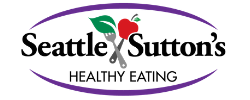How to Wash Fruits and Vegetables Properly
We all have a growing awareness of the safety and cleanliness of the foods we are putting into our bodies. With concern about viruses, bacteria, or chemicals on fruits and vegetables, some people have been avoiding buying fresh produce and others are recommending unsafe practices for cleaning fresh fruits and vegetables we bring home from the store. The goal for cleaning your produce is to minimize nutrient loss and reduce the body’s exposure to dirt and germs. Read on to learn how to choose and store, as well as how to wash fruits and vegetables safely.
Clean produce starts while you are at the grocery store. Look for fruits and vegetables that are free from bruises, cracks, open spots, and mold. These are areas where bacteria can collect or mold can grow and get to the inside of the food. The more a food is handled, the more exposure it has to potential germs and dirt. For this reason, it’s a good idea to choose produce that is placed in less easy to reach areas of the display. For example, a bunch of bananas at the top of the display will most likely have been handled less than ones sitting toward the bottom of the display.
After returning from the grocery store, it is recommended to store fruits and vegetables in the proper place and at the right temperature for food safety and to reduce spoilage (see side chart for proper storing guidelines). If your item came packed in packaging, leave the food in its wrapper unless the packaging is ripped or damaged. The less the food is handled, the lower the risk for bruising and harm which could increase bacterial growth. It is best to wait to wash produce until you are ready to consume it. If you wash it right away and do not fully dry your produce, it can lead to bacterial growth and speed up spoilage.
First things first…always wash your hands properly for 20 seconds with warm water and soap before handling any food item. Clean ALL vegetables and fruits well. It is recommended to use a soft brush on firm produce. Use clean water and dry fully with a clean towel if you are not going to eat it right away. Even if you do not plan on eating the peel, it is still recommended to wash them first as cutting through the peel could carry bacteria and dirt to the inside of the fruits and vegetables. Do not clean fruits and vegetables with soap because soap is not intended to be ingested and may causes a stomachache, nausea or other digestive discomfort. Sanitizing your scrub brush between uses will help to prevent bacteria and dirt from building up in the brush and being transferred to other food items.
If you have produce with bruises or damage, remove that area of the fruit or vegetable and be sure to clean around it very well with clean water. It is not recommended to rewash produce labeled as “pre-washed” or “ready to eat.”
Research is revealing that a scrub brush and water beats out commercial cleaners and chlorine or vinegar washes when cleaning fresh produce. One study from the University of Maine tested three commercial wash treatments and compared them to distilled water washes. Here is what they found:
Fit (Proctor & Gamble) reduced the microbes and residual pesticides in roughly the same amount as distilled water.
Ozone Water Purifier (Air-Zone Inc.) and J0-4 Multi-Functional Food Sterilizer (Indoor Purification Systems) removed microbes but were not as effective as distilled water washes.
Avoid soaking produce because you will lose nutritional content. Some vitamins dissolve into the water and are washed away when you dump the water down the drain. The FDA recommends distilled or bottled water because it has been filtered and purified to remove contaminants, however you can use very clean cold tap water instead of distilled water.
Even though you may have safety concerns at times, there is no need to give up on fresh fruits and vegetables. With proper handling and washing, they are safe and nutritious to eat. Many studies demonstrate the benefits we get from including a diverse variety of colorful fruits and vegetables in our diet, including reduced risk for cancer and other diseases.


Interested in eating healthy? Hungry for more?
